Editorial for MALD Contest 1 P6 - Scratch Cat and Painting
Submitting an official solution before solving the problem yourself is a bannable offence.
Author:
Hint 1
How can the area of the annuli/circles be approximated without cutting up both the x and y dimensions?
Hint 2
How can a Riemann sum be modified to work for circles? How can you easily extend it to work for Annuli?
Subproblem 1
Length of Union of Line SegmentsTo solve this problem, you must first be able to solve this subproblem. This can be done using Klee's Algorithm or coming up with your algorithm, as long as its complexity is
An alternative to Klee's algorithm is to first sort the line segments by their starting point, then for every line:
- If its start point is greater than the current segment union endpoint: Add the difference of the current union end and start to our answer. Then start a new segment union by updating the union start and end variables.
- If its start point is less than or equal to the segment union endpoint, the line is connected to the current segment union. Check to see if the line's endpoint is greater than the segment union's endpoint. If so, the current segment union is extended by the line, meaning we should update the current segment union endpoint. Otherwise, the line is completely covered by the current segment union.

This algorithm is about twice as fast as Klee's algorithm because an array of size
Subproblem 2
Riemann Sums: Approximating Area Under a FunctionA Riemann sum is an approximation for the area between a function and the x-axis. We can modify this idea to find the area bounded by circles (or annuli) instead of a function and the x-axis. Rather than finding the area between a function and the x-axis, you can use the upper and lower y-values of the circle as a bound for rectangles.
Rectangle-Based Riemann Sums
| Left Sum | Middle Sum | Right Sum |
|---|---|---|
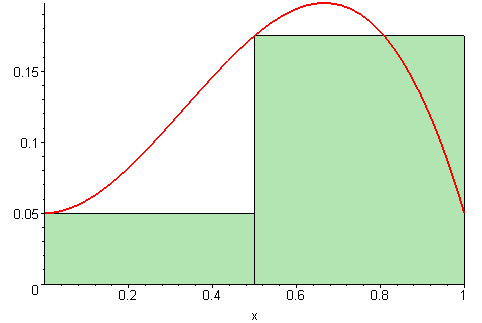 |
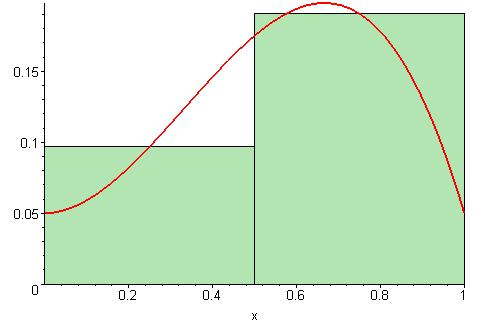 |
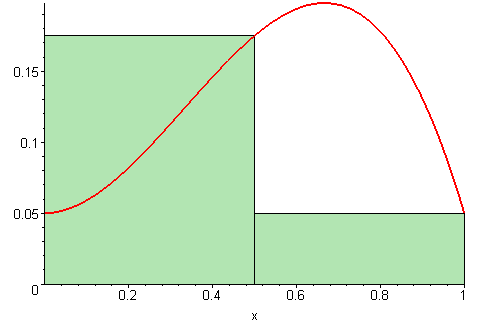 |
Trapezoidal Sums
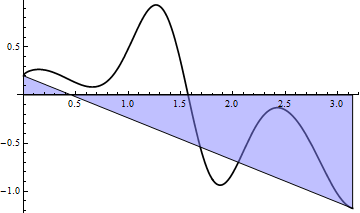
There are many Riemann sums types such as trapezoidal that achieve the same accuracy as rectangular using much fewer partitions. These are complex to modify for overlapping circles/annuli. For simplicity, use rectangle-based Riemann sums.
Full Solution
This problem is finding the area of the union of circles in subtask
The general idea is to break up circles into rectangles of width
Figure 1. Modified Left Riemann Sum on Three Annuli
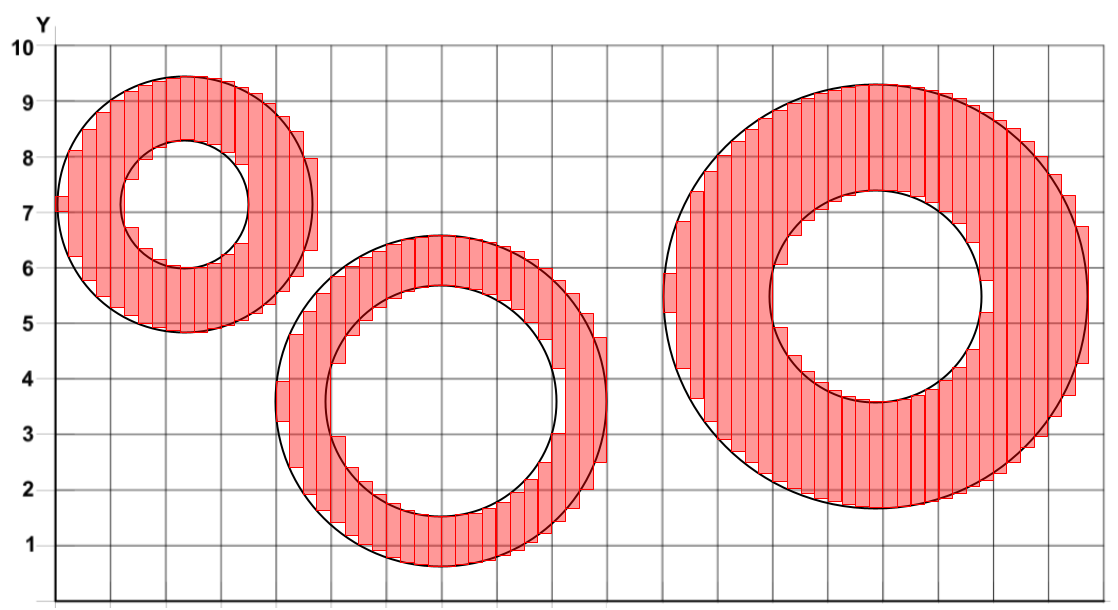
Figure 2. Modified Riemann Sums on Two Disjoint Unions
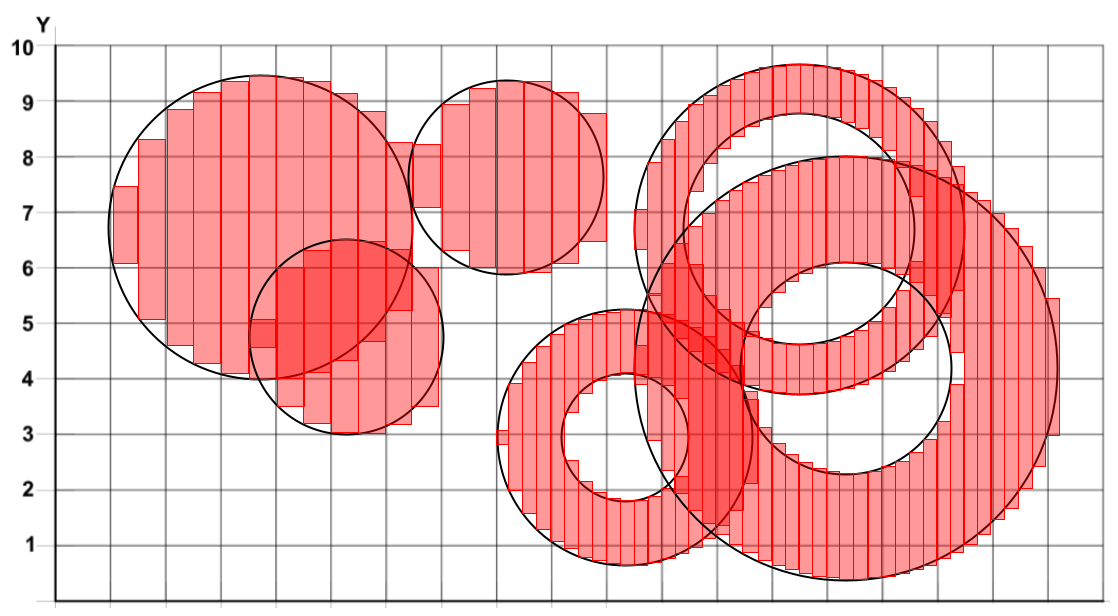
Figure 3. Expanded Circle Union
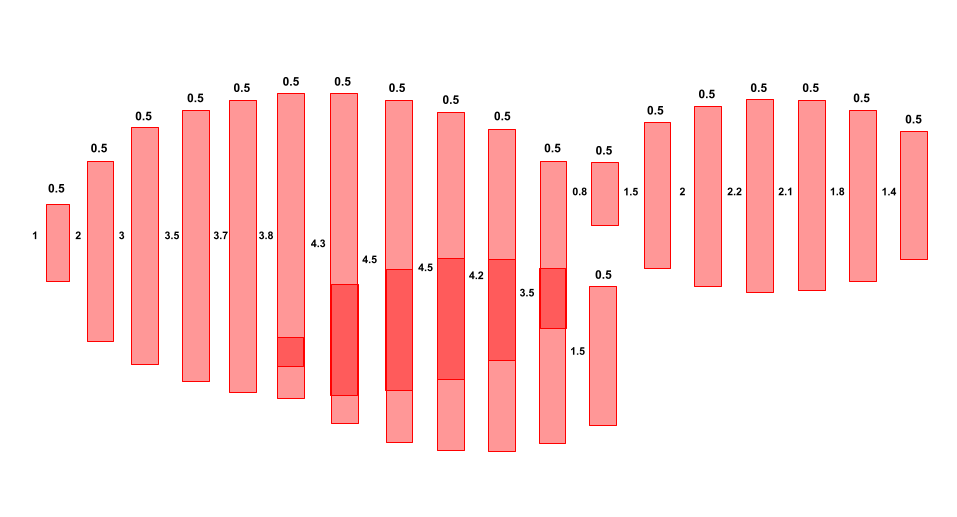
As seen in Fig 3., you can approximate the area by partitioning the circle from its minimum value to its maximum
value. Overlapping regions should not be overcounted, so we calculate segment union length rather than the sum of lengths.
Each rectangle height is distance between the upper and lower value of the circle. These can be found by modifying the implicit equation for a circle:
For a circle, the lower bound for a rectangle is and the upper bound is
. Find the segment for each circle at
(if it's defined) and store them in a list. Find the length of the segment unions in the list and multiply it by
(width). An annuli can have one or two segments, either
, or
and
.
If there are multiple disjoint unions at , you can still multiply their total sum by
. This works because
.
Difference Between Left and Middle Sums
If there were no intersections, there wouldn't be a large difference because circles/annuli are symmetrical; over guesses cover gaps.For this problem, middle sums perform better due to the smaller over guesses and gaps, but it doesn't matter which one you use unless you are tight on time. In the reference solution, using middle sums allowed a
In the reference solution, left sums was accepted a with maximum
Finding a  Value
Value
One option is trial and error, but you don't need to keep submitting until your solution gets TLE or AC.A better method is to approximate the minimum
For the intended solution,
This may not be completely accurate, but it's a good place to start. The reference solution with
Intended Complexity:
Comments